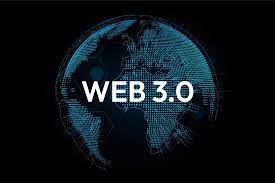Decentralization in Web3 is achieved through various technologies and protocols, with blockchain being a fundamental component. Here’s an overview of how decentralization works in Web3:
- Blockchain Technology: Blockchain is a distributed ledger technology that forms the foundation of decentralization in Web3. It is a decentralized and tamper-resistant database that maintains a continuously growing list of records called blocks. Each block contains a set of transactions, and these blocks are linked together in a chronological order, forming a chain.
- Distributed Consensus: Blockchain networks use consensus algorithms to achieve agreement on the state of the blockchain among multiple participants, eliminating the need for a central authority. Consensus mechanisms like Proof of Work (PoW), Proof of Stake (PoS), or other variants ensure that transactions are validated and added to the blockchain in a decentralized manner. Consensus mechanisms prevent malicious actors from tampering with the data and maintain the integrity of the network.
- Peer-to-Peer Network: Web3 relies on peer-to-peer (P2P) networks to distribute the blockchain across multiple nodes. Each network participant, or node, maintains a copy of the blockchain and contributes to the validation and verification of transactions. P2P networks ensure redundancy, fault tolerance, and resilience in the face of attacks or failures.
- Decentralized Applications (dApps): Web3 enables the development and deployment of decentralized applications (dApps). These applications are built on top of blockchain networks and utilize smart contracts for executing code and logic. dApps interact directly with the blockchain and can leverage decentralized storage, decentralized identity, and other Web3 protocols to achieve decentralization in various aspects of their functionality.
- Token Economy: Many Web3 applications incorporate the use of tokens, often cryptocurrencies, to incentivize network participants, govern the ecosystem, and facilitate value transfer. These tokens can represent ownership, voting rights, or other utility within the network. Token economies provide economic incentives for users to participate in the network and contribute to its decentralization.
- Open Protocols and Standards: Web3 promotes the use of open protocols and standards to ensure interoperability and compatibility between different blockchain networks and dApps. Open protocols allow for seamless communication and interaction, enabling users and developers to access and leverage decentralized services across different platforms.
Decentralization in Web3 refers to the distribution of authority and control across a network of participants, rather than relying on a central authority or intermediary. This is achieved through the use of blockchain technology and peer-to-peer networks.
In Web3, decentralized networks are powered by blockchain technology, which is a distributed ledger that records and verifies transactions across multiple nodes in the network. Each node in the network maintains a copy of the blockchain and participates in the validation and verification of transactions. This decentralized nature ensures that no single entity has full control over the network and prevents a single point of failure.
Decentralization in Web3 is facilitated by consensus mechanisms, such as Proof of Work (PoW) or Proof of Stake (PoS), which ensure that transactions and changes to the blockchain are agreed upon by a majority of network participants. Consensus mechanisms provide a way to establish trust and prevent malicious actors from manipulating or altering the blockchain.
Web3 also utilizes smart contracts, which are self-executing contracts with the terms of the agreement directly written into code. Smart contracts are stored and executed on the blockchain, and they automatically enforce the terms of the agreement without the need for intermediaries. This allows for trustless interactions and reduces the reliance on centralized authorities.
Decentralization in Web3 has several benefits. It increases transparency, as the blockchain provides a transparent record of transactions that can be independently verified by anyone. It also removes the need for intermediaries, reducing fees and increasing efficiency in transactions. Furthermore, decentralization gives users greater control and ownership over their data and digital assets.
It’s important to note that achieving full decentralization in Web3 can be a complex process, and there are varying degrees of decentralization depending on the specific application or platform. Some applications may use a hybrid approach, combining elements of decentralization with centralized elements for scalability or usability purposes.
Overall, decentralization in Web3 is about shifting power and control from centralized authorities to individual participants in a network, promoting transparency, trustless interactions, and user ownership.
